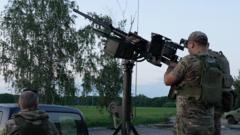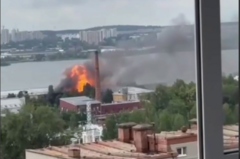As violence erupts, fears of a wider war loom, yielding fears about nuclear implications, water resources, and the fate of innocent civilians in the contested Kashmir region.
**Escalation of India-Pakistan Hostilities Marks a New Era of Conflict**

**Escalation of India-Pakistan Hostilities Marks a New Era of Conflict**
Tensions between India and Pakistan have reached unprecedented levels, leading to cross-border military engagements that could reshape South Asian geopolitics.
On May 9, 2025, the military conflict between India and Pakistan intensified markedly, evolving into one of the most extensive confrontations between the two neighboring nations in decades. Recent escalations have transcended the historically disputed territory of Kashmir, sparking attacks deep into both countries.
The combat initiated after a terrorist attack in Kashmir, which killed 26 individuals, predominantly Hindus, in a quickly escalating retaliatory cycle. In a stark display of aerial capabilities, India launched operations against targets within Pakistan aiming at militant groups believed to be responsible for the attack, while Pakistan countered by launching drone strikes into Indian territory.
This complex geo-political crisis has taken various forms, including widespread artillery shelling across borders and the use of drones—a relatively new weaponry for these nations. India reported civilian casualties from Pakistani shelling, while Pakistan has refuted claims of drone attacks, intensifying the atmosphere of mistrust.
Diplomatic efforts to ease tensions have barely scratched the surface, with regional powers like Saudi Arabia and Iran actively engaging in discussions to find a resolution. Nevertheless, both countries have heightened their military readiness, reflecting a persistent fear of escalating hostilities.
The implications of this military escalation go beyond armed confrontation. In a rapidly changing geopolitical landscape, both nations are reassessing their long-standing military alliances and arms procurement sources. India has increasingly turned to the West for arms supplies, while Pakistan relies predominantly on China for its military needs.
As researchers and diplomats analyze both nations' military doctrines, there exists a crucial consideration regarding water rights under the 1960 Indus Waters Treaty between the two countries. Amid rising tensions, India has threatened to suspend this critical agreement, which may further exacerbate regional instability and provoke significant humanitarian concerns.
In urban centers across India, particularly those within range of potential strikes, residents are reporting rising anxiety and panic. Many have begun stockpiling supplies as a precautionary measure, reflecting not only fears of physical violence but also economic instability affecting daily life.
Amid all this, the unfolding narrative within the wider international community reflects the complexity of modern conflict dynamics. As disinformation spreads through social media and government censorship renders news unreliable in both countries, the global perception of this conflict could hold significant sway over how it unfolds, and whether it finds resolution in diplomatic corridors or on battlefields.
The ongoing strife serves not only as a reminder of the deep-seated animosities rooted in historical grievances but also highlights the fragile interplay between traditional warfare and emerging global technologies, setting the stage for further escalations unless a concerted effort for peace is pursued rapidly.




















